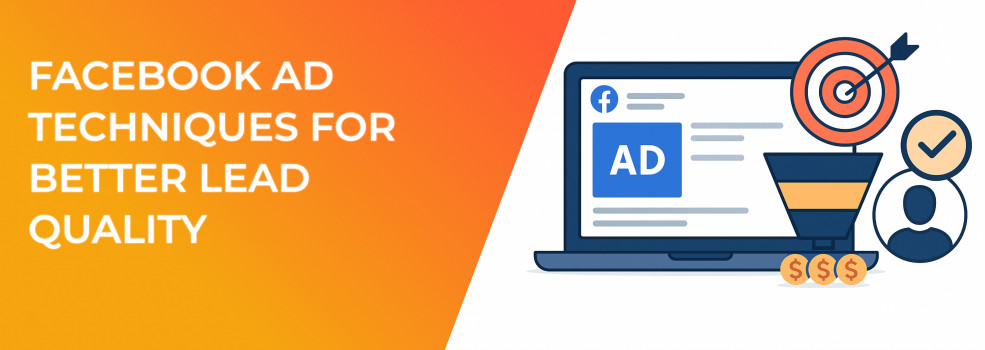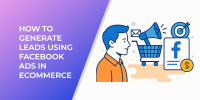Bringing in leads isn’t hard; bringing in high-quality leads that close is where the real game begins. The tips below blend Facebook Ad Optimization know-how with modern lead generation strategy so you can fill your pipeline with prospects who genuinely want what you sell.
1. Master Campaign Budget Optimization
Campaign Budget Optimization (CBO) lets Facebook’s delivery system funnel spend to the ad sets that convert best — hour by hour, not just day by day. Instead of guessing which audience will perform, launch three to five ad sets that vary by lookalike audiences, interest stacks, and creative types, then let CBO decide.
Power tactics
-
Combine Advantage Campaign Budget with at least two placements (Feed and Reels) so the algorithm can find hidden pockets of cheap conversions.
-
Use value-based lookalikes seeded with past purchasers to guide Facebook toward buyer lead generation rather than casual browsers.
-
Watch the Cost per Drive Leads metric inside Ads Manager; kill any ad set that hasn’t produced one completed form after 3,000 impressions.
Need a deeper dive into Advantage Campaign Budget scaling? Check out our full guide → How to Optimize Advantage Campaign Budget for Scalable Facebook Ads.
These steps align with Facebook Ad Optimization best practices and consistently lower Cost per Generate Sales lead by 20–40%.
2. Deploy Facebook Pixel Like a Pro
A correctly installed Facebook Pixel (plus Facebook Conversion API) is the backbone of data-driven advertising. Track deeper funnel milestones such as “Booked Demo,” not just “Page View,” to teach the algorithm what a valuable action looks like.
Implementation checklist
-
If you use WordPress, the Facebook Pixel WordPress plugin pairs with Google Tag Manager to fire events without editing theme files.
-
Run each URL through the Facebook Lead Testing Tool to be sure events are firing and parameters like revenue or lead score are passed accurately.
-
For low-volume sites, aggregate events — combine “Add to Cart” and “Start Trial” under one “High Intent” conversion to feed Facebook enough data.
Track events with both Pixel and CAPI to give Facebook smarter optimization signals.
If you’re still configuring your Meta Pixel events, learn how to unlock laser-targeted segmentation in Unlock Laser-Targeted Results with Meta Pixel Audience Segmentation.
With richer events in place, you enable Facebook Advertising Analytics reports that guide smarter campaign tweaks.
3. Build Hyper-Targeted Custom and Lookalike Audiences
Precision beats reach every time. Upload your CRM’s closed-won list and build a 1% Lookalike Audience. Next, layer demographic qualifiers — job title, company size, or purchasing role — to mirror your ideal buyer.
Advanced segmentation
-
Retarget site visitors with FB Retargeting Ads that show social proof, testimonial carousels, or time-sensitive offers.
-
Create a “Never Closed” exclusion list so Facebook doesn’t waste impressions on people who already said no.
-
Use interest keywords such as “SaaS Marketing” + “Procurement” to stack intent signals and push Lead Gen ROI higher.
Wondering whether Custom or Lookalike Audiences deliver better reach? This side-by-side guide breaks it down: Custom vs Lookalike Audiences: What Works Best for Facebook Campaigns?.
These steps stop you from paying for eyeballs that won’t convert and improve B2B Lead Generation efficiency.
4. Customize Lead Ads for Screening
Facebook Lead Ads paired with Facebook Instant Forms can feel almost too easy — prospects tap once and your CRM fills up. Add screening fields (annual budget, timeline, company headcount) so only decision-makers slip through.
Pre-qualify your leads by adding screening fields inside Instant Forms.
Boost quality further
-
Use conditional logic: if a prospect chooses “Enterprise” budget, reveal a calendar link; if “Bootstrap,” route them to a resource center.
-
Sync your form to a nurture email that delivers B2B Lead Generation Tips or a mini-webinar replay within 60 seconds of signup.
-
Monitor form completion time; if it jumps above 30 seconds, shorten wording to keep Best Lead Gen rates high.
For extra ways to squeeze performance from Facebook Lead Ads, skim How to Use Facebook’s Lead Ads Features for Effective Lead Generation.
Done right, you’ll collect fewer but far more valuable contacts, no more chasing tire-kickers.
5. Craft Creative That Hits Specific Pain Points
Generic ads fade into the scroll. Write headlines that spotlight the pain — “Still Struggling to Reach IT Directors?” — and promise a clear fix. Pair with visuals that dramatize before-and-after results.
Creative recipe
-
Show charts or screenshots that illustrate a 45% drop in Cost per Driving Leads rather than abstract graphics.
-
Insert social proof: star ratings, client logos, or a client quote front-and-center.
-
Rotate formats: a how-to reel, a static “snapshot” image, and a square video. Diverse assets feed the algo more signals, a core tenet of Facebook Ads Optimization.
Need copy ideas that hook users in seconds? Dive into the psychology behind scroll-stopping ads in The Psychology of Facebook Ads: How to Hook Your Target Audience in Seconds.
Keep a swipe file of Facebook Ads Example posts that hook your own attention; reverse-engineer why they work.
6. Optimize for Conversions Instead of Clicks
Clicks are cheap; conversions pay the bills. Set your campaign objective to “Leads” or, better, a custom “High-Value Lead” event once volume allows. Facebook will chase users who act, not browse.
Scaling roadmap
-
Watch for Learning Limited Facebook Ads warnings — if you can’t hit 50 events per week, consolidate ad sets or broaden targeting until you do.
-
Once stable, increase daily budget by no more than 20% every 48 hours; bigger jumps can confuse the delivery system.
-
Compare Cost per Quality Lead vs. Volume. When the first rises faster than the second, tighten audience criteria or refresh creative.
Accelerate results by exiting the Facebook learning phase fast with these proven tweaks in How to Finish the Facebook Learning Phase Quickly.
These steps land under Facebook Advertising Best Practices and protect profits as you scale.
7. Commit to Continuous A/B Testing
Markets shift, competitors copy, and creatives fatigue. The answer is relentless experimentation.
Testing blueprint
Test one element at a time — headline, primary text, image, or CTA — to pinpoint causality.
-
After 10,000 impressions, pick your winner with at least 95% statistical confidence.
-
Roll insights into new variants weekly; document results so lessons compound.
Test one variable at a time to get clear, actionable results from every campaign.
Grab even more Facebook ad testing strategies in Key Strategies for Facebook Ad Testing: What You Need to Know.
Regular testing, combined with stored learnings in a spreadsheet, forms the engine of Facebook Ads Tips that actually move revenue.
8. Evaluate Lead Quality Metrics Relentlessly
You can’t improve what you don’t track. Push every form fill into your CRM or marketing automation platform with campaign, ad set, and creative IDs attached.
Dashboard essentials
-
Cost per Quality Lead
-
Opportunity-to-lead ratio
-
Pipeline Velocity (days from lead to closed won)
-
Lifetime Value per originating ad set
If you’re ready to look beyond CTR and CPC, learn which numbers prove real revenue impact in How to Analyze Facebook Ad Performance Beyond CTR and CPC.
When a segment consistently closes above average, build a fresh Meta Ads Campaign lookalike on those customers. If another source lags, shut it off quickly. Data-grounded pruning keeps Best Lead Generation Services metrics trending upward.
Final Word
Facebook is a powerhouse for attracting high-quality leads, provided you align campaign structure, tracking, creative, and targeting with the strategies above. Put these tactics into play, highlight your most valuable conversion events, and watch your pipeline fill with prospects who are ready to buy.

